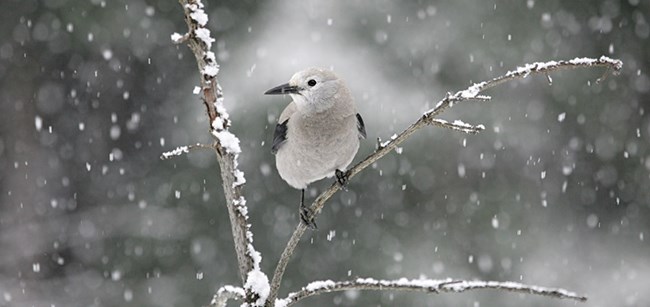Last updated: January 4, 2021
Article
Clark’s Nutcracker

Photo: NPS/Jim Peaco
Primarily living in the mountains of the western U.S. and Canada, Clark’s Nutcrackers move upslope in the spring after their young fledge, living in subalpine habitats of whitebark pine and limber pine. They migrate back downslope in the fall, or earlier if the pines have poor cone crops. Only when cones are especially scarce will large numbers of nutcrackers move longer distances within or outside of their normal range.
Clark’s Nutcrackers use their dagger-like bills to rip into pine cones and pull out large seeds, which they stash in a pouch under their tongue and then carry away to bury for the winter. Each birds buries tens of thousands of seeds each summer and remembers the locations of most of them. Seeds they don’t retrieve play a crucial role in growing new pine forests.
Originally mistaken for a woodpecker, the bird was named after William Clark when first observed by the Corps of Discovery near the Lemhi River in August 1805.
Here’s a short podcast about the Clark’s Nutcracker from BirdNote:https://cdn.simplecast.com/audio/97c254/97c254b3-f6b6-4a81-bd04-c3a63df25005/6211c939-5971-488b-afc5-43278b6def75/191019-clarks-nutcracker-natures-arborist_tc.mp3
